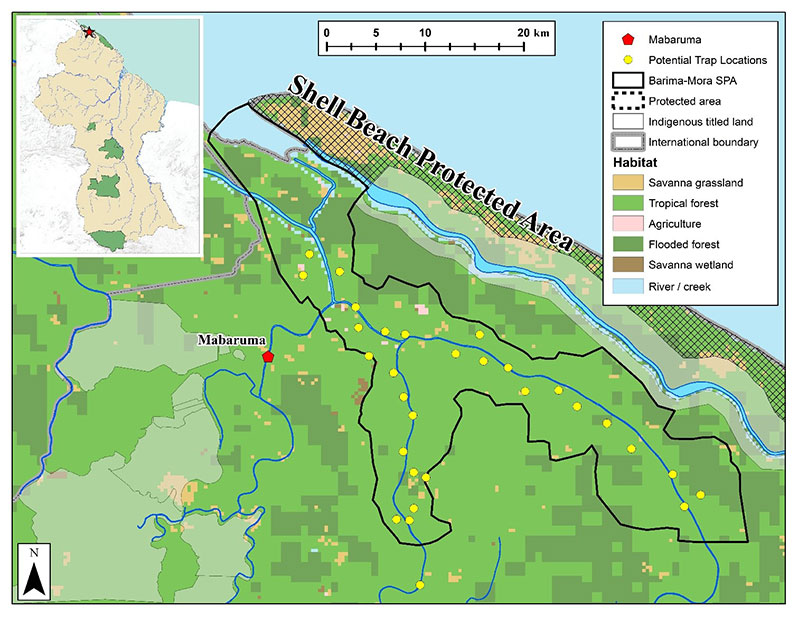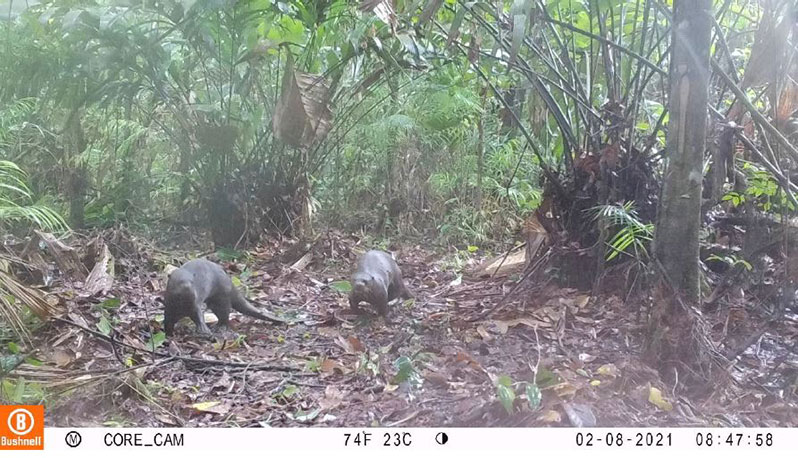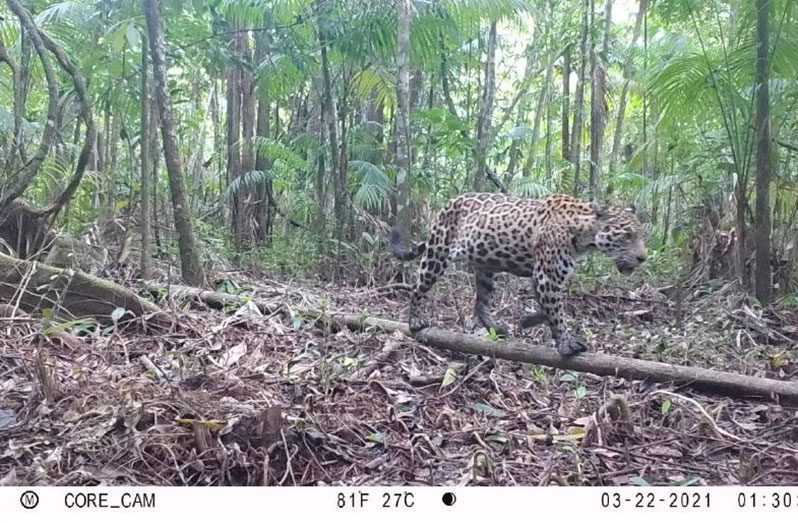LOBBYING for the Barima-Mora Passage (BMP) in Region One to become a UNESCO World Heritage Site, the Guyana Marine Conservation Society (GMCS) recently conducted a three-month survey in the area where a number of endangered, vulnerable and near threatened species were observed.
Monitoring the medium and large-bodied mammals living in the area, the Barima-Mora Passage Mammals Survey (BMPMS) was a historical one as it covered an area in Guyana that had never before been studied for its biodiversity.

“Historically, most of the research activities happening in Guyana happen in the south. So you hear a lot about research being done in the Rupununi, but there has never been a camera trap in the North West area before. It’s important because it’s the first time that we would be documenting the large and medium-body mammals in this area,” explained Felicia Collins, a Marine biologist and Programme Coordinator for the project.
The survey involved 30 camera traps being stationed along the Barima and Lower Kaituma rivers.
The survey ran from February 3–May 19 and was made possible by the support of a German NGO – ARA. It was also done in collaboration with Dr. Matt Hallett from the University of Florida and The Jacksonville Zoo and Gardens. The GMCS also collaborated with the Hydrometeorological Services to conduct water- quality testing within the research area.

Extending from the brackish parts of the lower Kaituma River up to the Shell Beach Protected Area (SBPA), the Barima-Mora Passage (BMP) is considered to be the location of one of Guyana’s most intact mangrove ecosystems, and is home to many of the indigenous peoples who live and depend directly on the ecosystem for their livelihoods.
World Heritage Sites are areas designated by the United Nations Educational, Scientific and Cultural Organisation (UNESCO) as having cultural, historical, scientific or other forms of significance. Once designated a World Heritage Site, an area becomes a landmark or area with legal protection by an international convention administered by UNESCO.

Though the BMP is a unique and vibrant ecosystem, it is considered to currently be at risk from human activities and climate change; as such, the GMCS is hopeful of getting a level of protection for the area.
Because of this, Collins said it is important to understand the kind of plants and animals found in this area and the roles they play in maintaining this ecosystem.
“This mammal survey will provide a baseline for monitoring mammal population overtime,” Collins explained,
She further noted that: “Also now that we’ve started and we know what is here, we could also begin our national database system, where we could combine with data from the south to say we thought we had maybe a particular population size, but now we get a better overall picture of how we are doing as a country in terms of what we have. We’re not hoping for this to be a one-time thing, but continuous monitoring.”
A total of 139 species were documented during the survey of which 18 species are of conservation concern.
Collins said that while none of the species discovered were unexpected, she was taken aback by the discovery of just how large a population of Guyana’s famed Giant Anteater, a near threatened species, was present in the area.
“To see a healthy population of the Giant Anteater in the mangrove forest was surprising. You’re so used to seeing the anteater as a giant of the savannah you don’t really expect to see them in the swampy mangroves, so I was shocked and thought this is something that a lot of people may not be aware of,” she said.
Some other species of conservation concern which were discovered included the Giant River Otter, which is an endangered species, the Jaguar, and Margay, which are near threatened species, and the White Lipped Peccary, which is listed as a vulnerable species. The Red Brocket, which is a data-deficient species, was also seen.
“With the Giant River Otters we were very lucky to capture those because they don’t really come out of the river. But we were lucky enough to capture two families crossing in the forest,” Collins related. .



.jpg)










